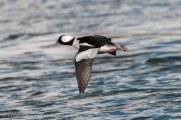Our family/beginner bird walks are conducted on the first Saturday of every month September through June at Turtle Bay. Wintu Audubon can provide binoculars and field guides. Call John Winchell at 241-1448, for more information. We will meet at the Monolith parking lot next to the new Sheraton Hotel at Turtle Bay.
Tag: birds
Chaparral Homes
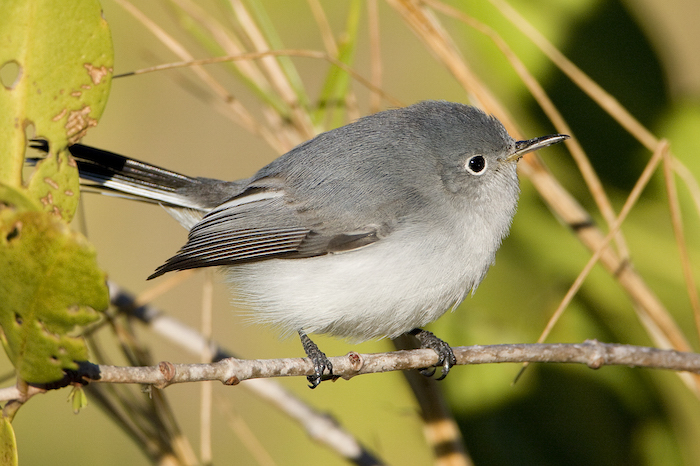
We just might live in one of the world’s most under-appreciated plant communities. Although so many of us make our homes in the chaparral, people often look past this native brushland to sigh at the forests above us or the spreading fields below. They are missing a lively world right here.
Chaparral is a community of living creatures uniquely adapted to the Mediterranean climate at about our latitude on the west coasts of continents around the globe. It’s not desert because of winter rains. It’s not forest because of regular summer heat and drought. It’s not grassland because, historically, its fires were too infrequent.
How do the plants survive, here where we huddle indoors with AC? They minimize water loss. With leaves that are tiny or vertically oriented, they cut their exposure to the withering sun. With waxy surfaces or whitish colors they reflect sunlight. With thick, resinous leaves they resist wilting, and with hairy surfaces they catch water vapor that cools the plant as it re-evaporates.
The success of these plants creates a thick bramble, a perfect hideaway for numerous animals wherever it grows. The tale of Br’er Rabbit and his safe briar patch has origins that include the fynbos, the African version of what we call chaparral. Here in California many birds find the brush a safe and welcome home.
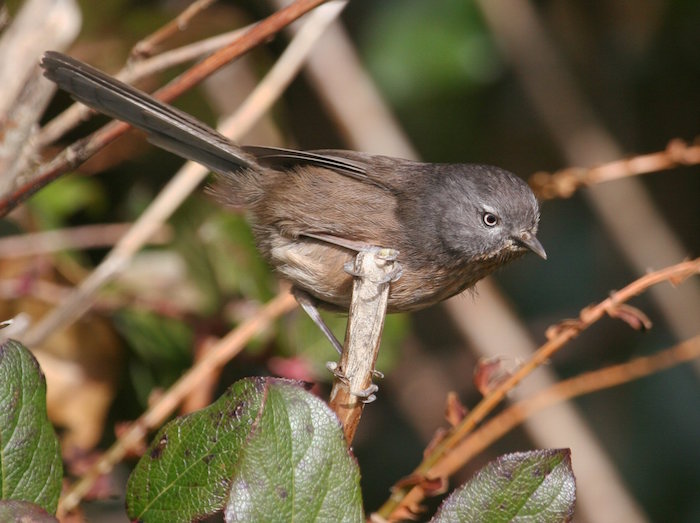
Wrentits are tightly tied to their shrubby habitat. The size of a tangerine with a long, cocked-up tail, these hideaway gray-brown birds weave their way through the brush picking insects and making up for their near invisibility with a common chaparral song, described as a bouncing ball accelerating and ending in a trill. Strictly local, wrentits mate for life shortly after fledging and stay their whole lives in the brush within a quarter mile of their native nest.
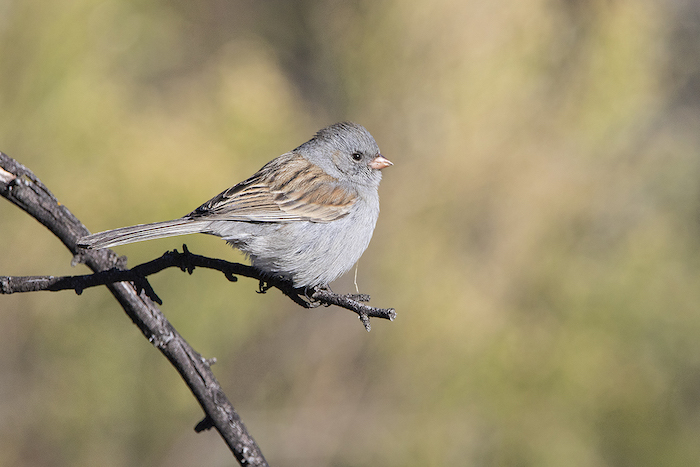
Black-chinned sparrows also hug the scrub, but they vacation in Mexico each winter after the work of raising their kids here. These pink-billed beauties are reclusive, rarely seen even by avid birdwatchers except when a spring male perches on a low shrub to sing his heart out. They seem particularly rain-sensitive. Too much or too little precipitation reduces their nesting success.
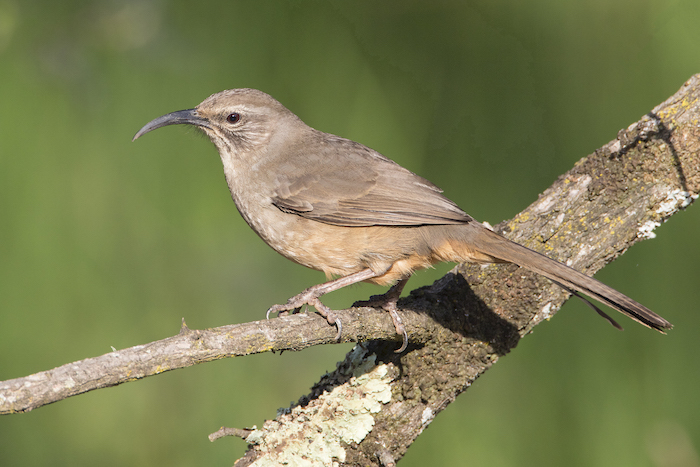
California thrashers are another timid-seeming bird of the chaparral. They like to remain under brush when they scrape for insects, and their long, curved bills allow them to keep an eye up and out for predators even while foraging. They will, however, perch high and exposed in the tallest shrub around to sing loud and long for a mate! Some things seem even more important than safety!
Blue-gray gnatcatchers break the mold of “secretive” chaparral birds. These plucky little balls of fire energetically twitch their tails sideways and chase scrub-jays at least ten times their size. As a species, they range broadly, nesting in scrublands and forests across the US, and annually migrating as far south as Central America. Their habit of sprinkling other birds’ songs into their own buzzy trills has earned them the title “Little Mockingbird.”
The chaparral where these birds prosper is often misunderstood regarding fire. While many chaparral plants do bounce back from burns, either by crown sprouting or with seed germination, they cannot endure frequent fires. Their historic burn rate seems to have been on the order of 30-150 years. More frequent burns kill off the chaparral and turn it into grassland.
That has been happening recently. The longer, hotter summers of our time have joined with development to diminish chaparral for both people and birds. The Carr fire alone burned over a thousand homes and over 200,000 acres of habitat. In the last fifty years, wrentits and California thrashers have declined by a third, and black-chinned sparrows by a catastrophic 72%.
Fortunately, however, we can live here and still have a “here.” With thoughtful siting, landscaping, and construction material choices, and by steering away from fuels that create the longer, hotter seasons of our fires, we can continue the rhythms of the chaparral and coexist with the wild beauties that also make it home.
Good Things Come in Small Flocks
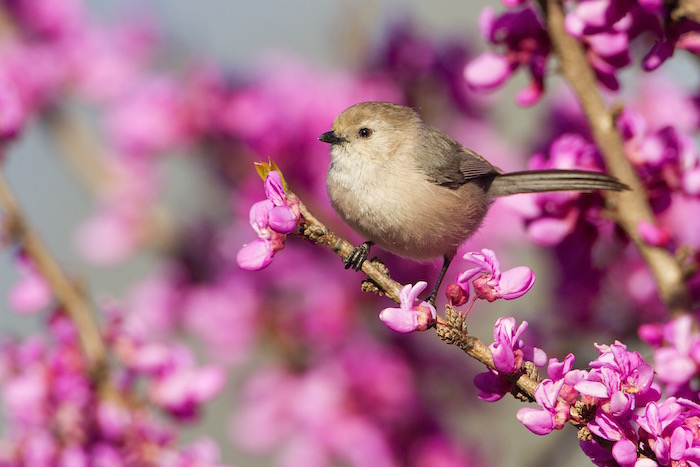
In the list of things cute, bushtits belong right up there with babies and buttons. They’re tiny and fluffy, sociable, soft-voiced, and soft-toned. They’re the downy little twittering things, the size of a mouse, the weight of a hummingbird, and the color of a country road. They fly severally from one tree to another—three of them together, then four more, oh, ten of them, and another seven, and sometimes on up to several dozen. They gently tweet among themselves—“I’m here,” “I’m here,” “I’m right here with you”—keeping loosely together as they scour leaves and twigs from every angle to find their miniscule insect meals.
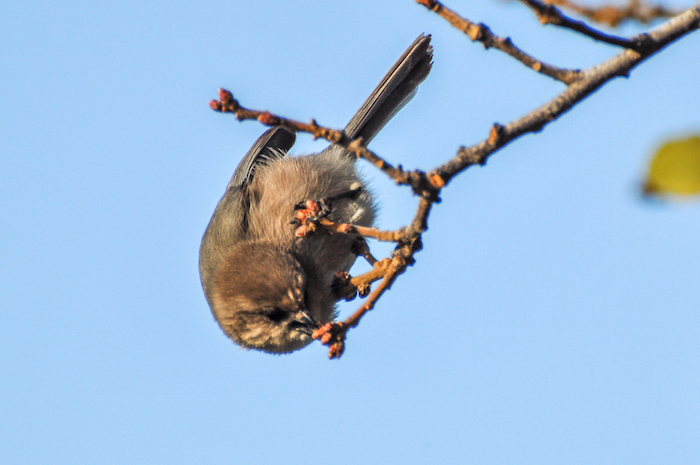
Up close, their gray-brown feathers seem softer than an Easter chick’s. The males look gentle, doe-eyed. The females sport a modest adornment. Their eyes are amber.
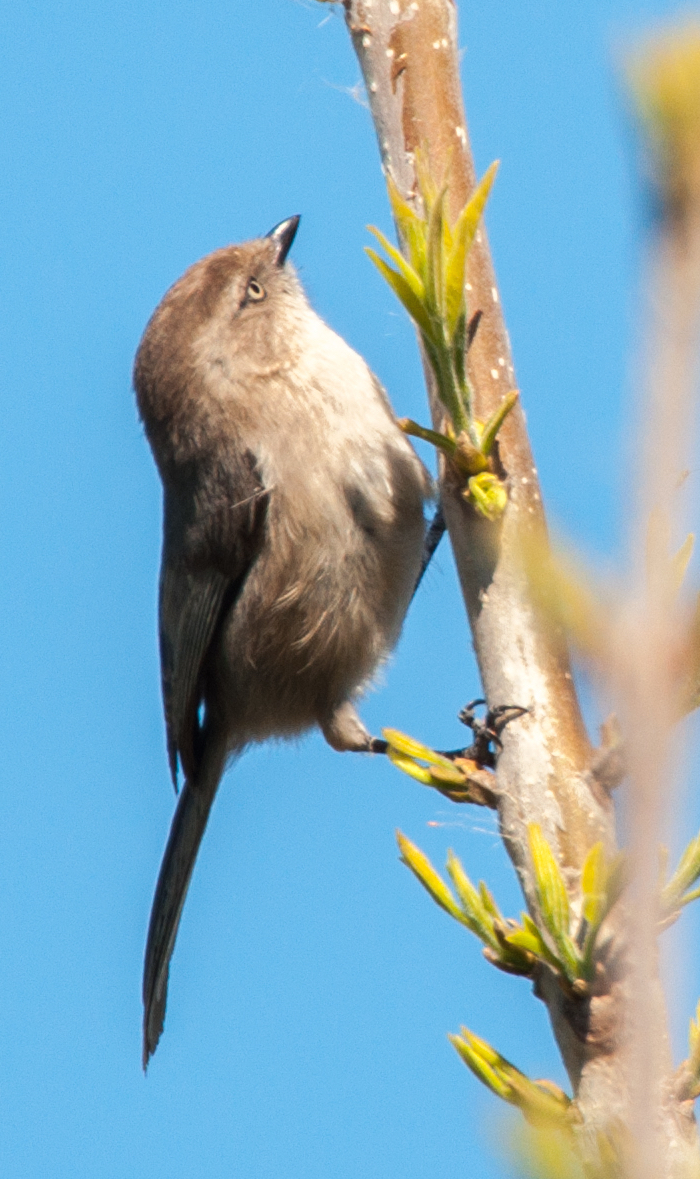
But the great extravagance in the bushtit world is their nest. Both parents and sometimes additional helpers, too, work for up to a month to weave their hanging crèche. It might be in weeds just off the ground, or it might be a hundred feet up in a tree. It is often at a handy viewing level. Imagine a hanging tube sock, a foot long, woven of soft plant fibers meshed with strong spider webs. In that mossy pouch the young will hatch and grow. The upper part of the sock, stitched closed against its supporting leaves and branchlets, holds a single half-inch peep-hole, the nest’s only doorway.
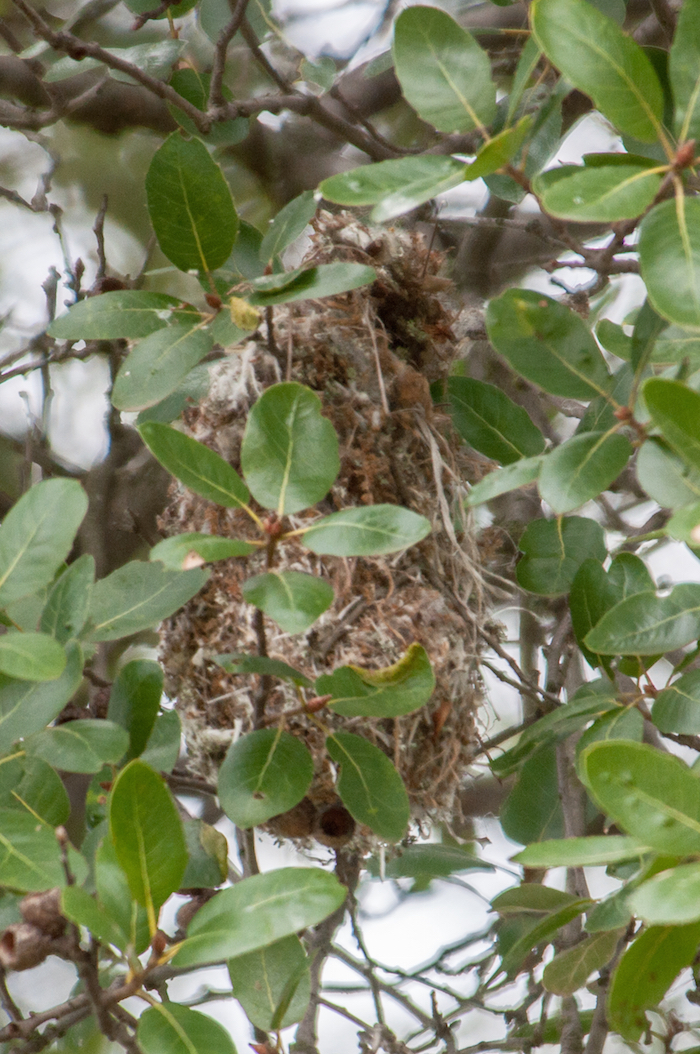
The extensive work required for their elaborate homes seems to structure much of bushtit life, but they face the challenge with a pragmatism that would make a yankee proud. First, they do not migrate. Staying put allows them to start building their homes early, as early as mid-winter, when mild spells begin to break winter’s chill. Second, mated pairs stay together for several years, a level of commitment normally seen only in large birds like swans and eagles. Their mating fidelity spares bushtits from hitting the dating scene every year, and leaves more time and energy for nesting. Third, once they build a nest, a pair will usually reuse it for a second clutch of eggs. Building a new architectural masterpiece would take time and energy away from that second batch of young.
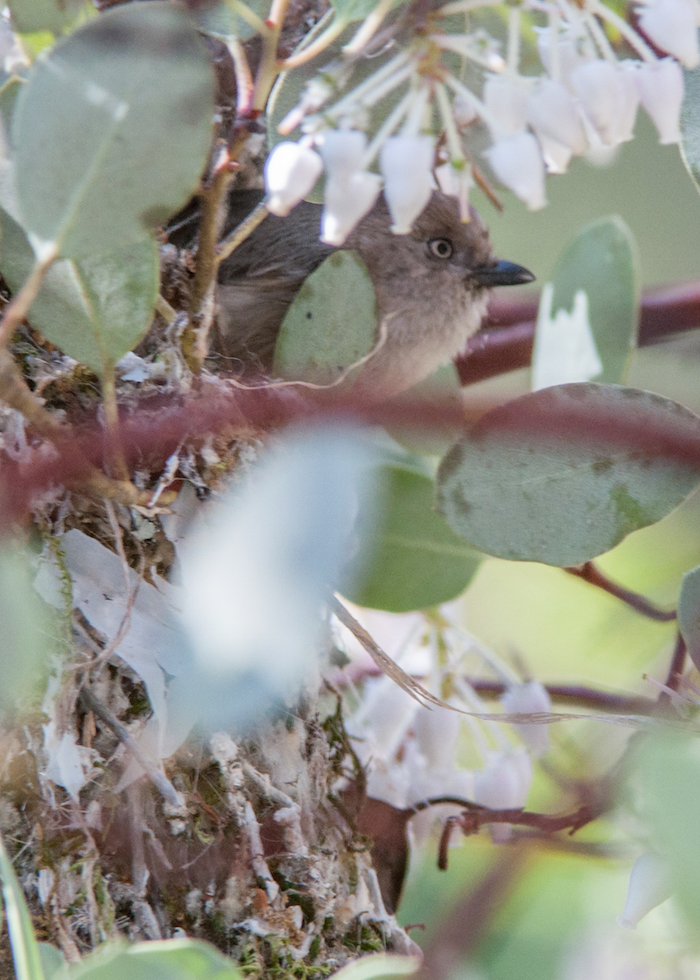
Fourth—ah, being tiny does not make life less complicated. Bushtits live in flocks of about 10-40 birds. They travel together when foraging, they huddle together when it is cold; they sometimes intersect with other flocks, but then reform their own. And in nesting season, when there are unmated birds or when flock-mates lose a nest, they often undertake what is called plural cooperative breeding.
Adults without their own nest will often help their flock-mates at all stages of nesting—construction, incubating, feeding young, and shepherding fledglings. Up to six adults may help at some nests, all sharing in the warmth of the home. Helpers often continue to feed fledglings while the breeding pair starts a second clutch. Sometimes two or more females will lay their eggs in the cooperative nest. The DNA studies to determine paternity in shared nests have not been done.
Close views are often possible with little birds. When my daughter was a child a flock approached us in the back yard, twittering through twigs just a yard away with their peeping and soft feathers. We watched, and she scrunched her nose over a smile as if in recognition that Oh, there’s beauty in the world. It’s a view I’d wish for every child, and every parent, too.
Floating Dinosaur Birds
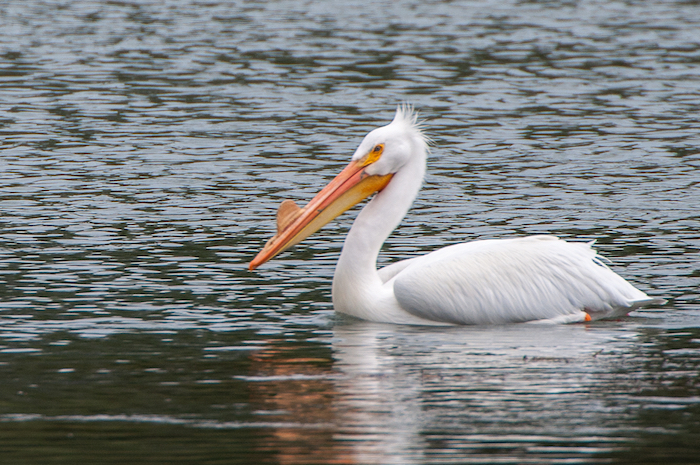
What California bird weighs five pounds more than our ten-pound eagles, has a wingspan two feet longer than the eagles’ seven feet, and a beak twice as long as a great blue heron’s? What bird is rumored to eat its own young, and also to feed its young with its own blood? What bird is noted in a 1910 poem by Dixon Lanier Merritt as wonderful because “His bill will hold more than his belican”?
Yes, the bird is the American White Pelican. (And yes, the poem is by Dixon Merritt, not Ogden Nash.)
These old birds, with fossil relatives going back half way to the dinosaurs, are shy of people, and remain an infrequent sight in Shasta County. But they are here. They nest along the shallow lakes of north-eastern California, and they winter even closer, throughout the Sacramento River Delta. Occasionally we spot them.
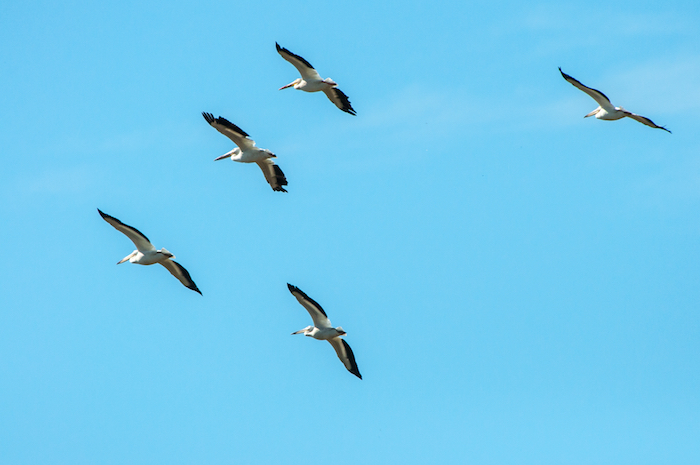
On a quiet summer day they might float high overhead. They typically proceed in a silent group of fifteen or so, with not a single one of them deigning to speak or flap a wing. Their long bills spear forward like a pteradactyl’s; their motionless, extended wings show black flight feathers on otherwise snowy plumage. They hang in the summer-blue sky, still as pallbearers, seeming beyond the rule of something as mundane as gravity.
But of course they are fellow Earthlings, and sometimes will tilt Earthward and glide severally into a water-ski landing on a shallow lake. They prefer shallow lakes because of their feeding style.
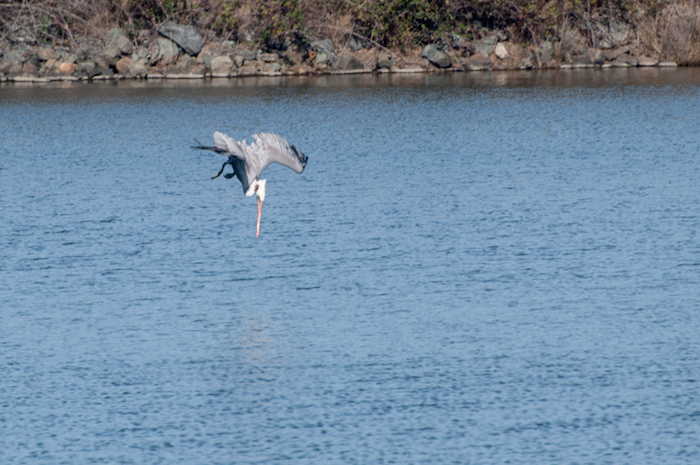
Their coastal cousins, the brown pelicans, plunge into the water and scoop a beak-full of ocean and, they hope, stunned fish. White pelicans, on the other hand, paddle along the surface to find their food. Frequently they group together to swim-herd fish into shallow coves, where they can more easily scoop a mouthful of prey, either from their normal floating position or by tipping tail-up like a mallard. White pelicans will swallow salamanders and crawdads, but they mostly dine on warm-water fish like carp and minnows.
Each spring, the adults’ beaks brighten from yellow to orange, and they develop a rounded ornamental fin on their upper bills—an accessory that perhaps one must be a pelican to admire. The mated pair scrapes out a hollow in sand or gravel where the female lays 2-3 eggs. Only one of the young will usually fledge. Their in-nest competition is fierce.
While incubating or otherwise resting, pelicans often tuck their bills down their front sides. It may be this habit and the red-orange bill of the breeding season that fostered the mistaken myth that adult pelicans feed the young their blood. They do not.
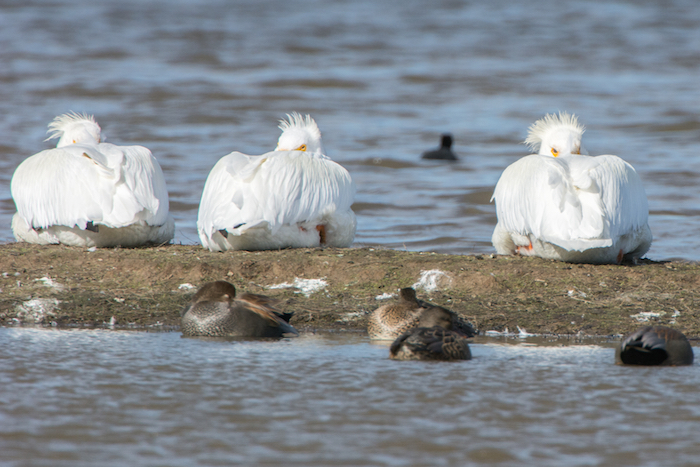
As for the grisly tale that parent pelicans eat their offspring: adult pelicans do not carry food to their young in their pouched beaks. They swallow the food and then regurgitate it for the nestling. On its part, the baby stimulates regurgitation by sticking its own beak down its parent’s throat. The scene looks very much like the parent is eating its baby, head first. The feeding practice and the tale it inspired are primitive and perhaps galling; but the unpretentious dining style seems to have worked for 30 million years.
White pelicans declined for the first half of last century, perhaps in part due to the loss of a major nesting rookery when the progenitors of the Westlands Water District drained Tulare Lake, which at the time was the largest lake surface west of the Mississippi. But now the pelicans are recuperating—into new trouble, expanding into the southeast where catfish farms create rich feeding grounds.
A Thanksgiving Celebration of the part of the bird we don’t eat
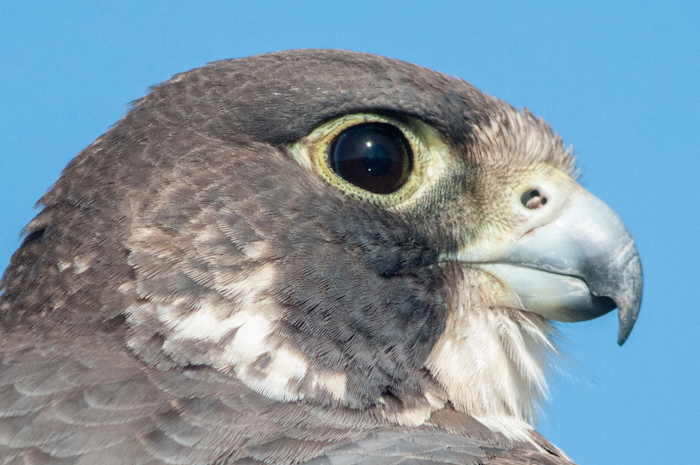
Bill, neb, schnoz – whatever it’s called, a bird’s beak is its second most important appendage after its wings. Since birds’ upper limbs are devoted to flight, the beak is vitally important in manipulating objects for feeding and nest building. Although some species are able to use feet for those purposes, many rely entirely on their bills.
The upper and lower mandibles comprising the beak are bony structures covered with keratin, a substance similar to human fingernails – and also similarly, constantly growing. The keratin layer may be very rigid and powerful as in the woodpeckers, whose beaks can drill nest holes or tease out insects in hardwood trees. In some species such as puffins and White Pelicans, the keratin forms projections during breeding season, presumably to enhance their attractiveness to prospective mates. These ornaments are shed after nesting time.
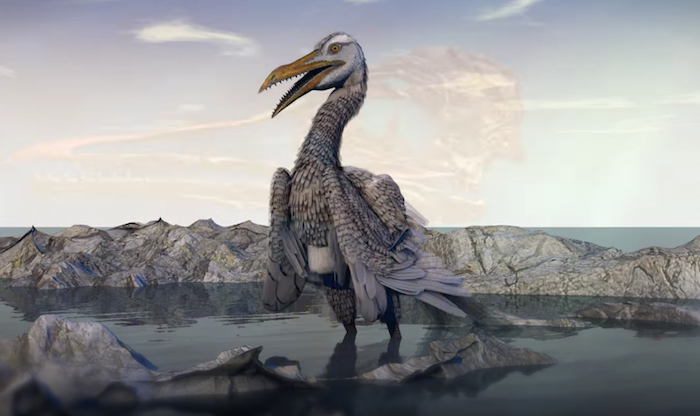
So, how did the toothed jaws of ancestral dinosaurs become transformed into modern beaks? A strong hint is offered by the recently reconstructed fossils of an ancient sea bird, Icthyornis dispar, that lived alongside dinosaurs 87 to 82 million years ago. Although it had dinosaur-like teeth, its long, narrow jaw was tipped by a tiny beak that it could have used like tweezers to grasp objects. The scientist that led the effort to reconstruct this bird said that it pecked like a bird, but bit like a dinosaur.
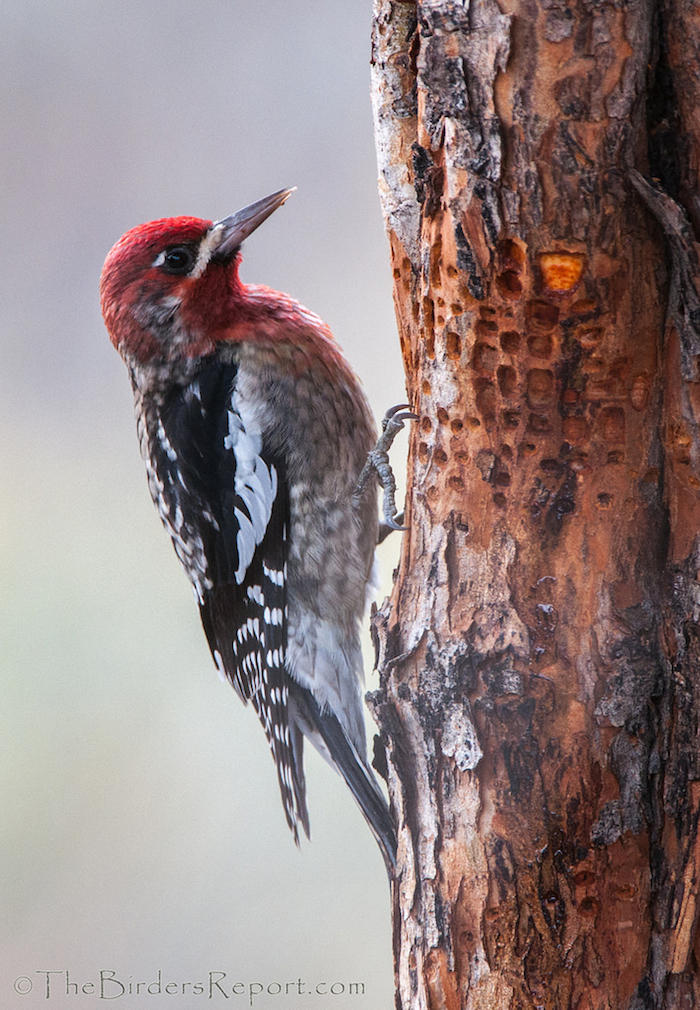
Over the millennia since then, adaptation to many different foods and environments has led to the vast variety of bills seen in modern birds. Form follows function, and so we have finch and sparrow beaks that act as crackers for seed-opening; eagles with shredders to tear apart meat; woodpeckers with chisels to bore into wood for insects; hummingbird probes used to reach into flowers for nectar; heron and kingfisher spears for skewering fish or frogs; and the warblers’ tweezers for grabbing insects. Not all birds have beaks specialized for a single purpose – the omnivorous crow has a versatile beak that all by itself can be likened to a Swiss army knife.
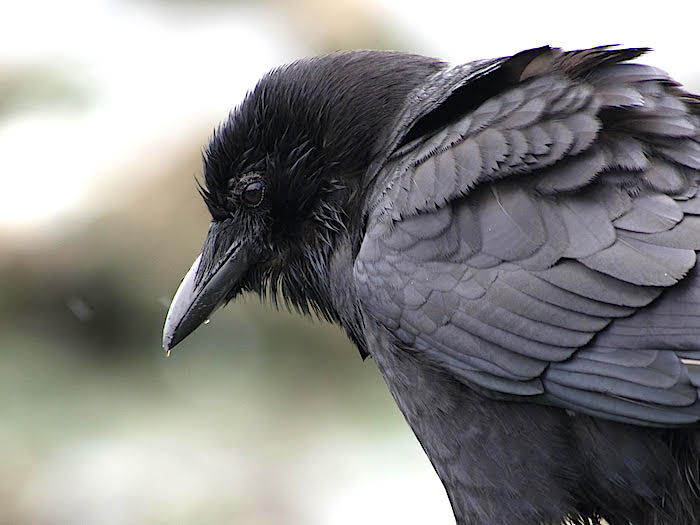
Most birds have little or no sense of smell, but there are notable exceptions. Vultures find the carrion they eat by odor – a characteristic taken advantage of by oil pipeline companies. By including a decay molecule in the crude oil, oil companies attract a cloud of vultures to leaks. The vultures, in turn, are followed by pipeline tenders with repair equipment. At sea, the tables are turned. Some seabirds can follow an odor plume to locate dead fish – and in this case the birds take advantage of the humans to detect fishing boats and their discards.
Generally, nostrils are on the part of birds’ beaks close to the head. However, New Zealand’s distinctive kiwi has nostrils near the tip of the beak where its well-developed sense of smell helps it find the insects and earthworms that it eats in the leaf litter.
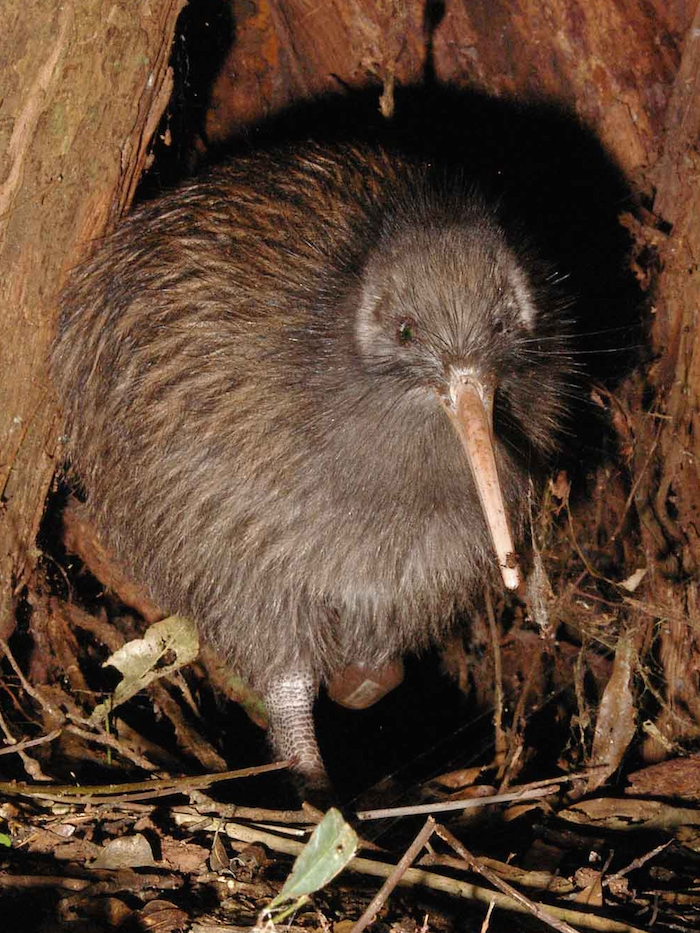
The flamingo feeds in a manner as distinctive as its tropical appearance. It partially submerges its beak in prey-rich water, holding it upside down so that the upper mandible is below the lower mandible. It draws in large amounts of water and sieves out small organisms by means of hair-like projections on its beak. Thus, it is a filter-feeder, a characteristic it shares with baleen whales and oysters!
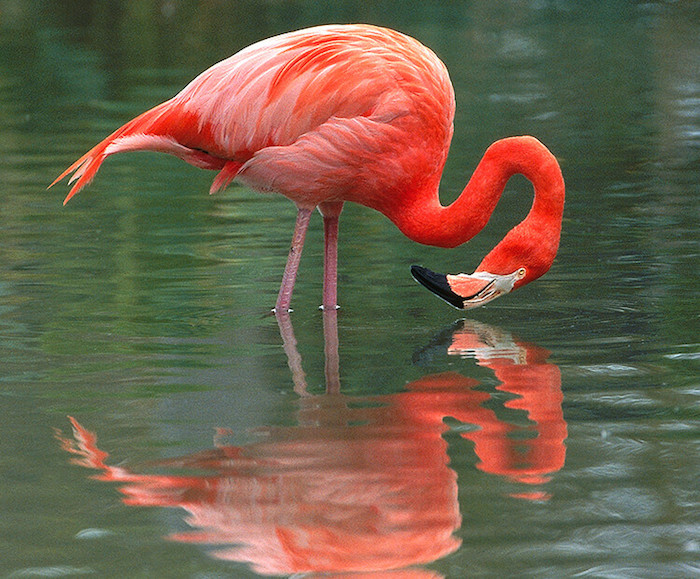
Our familiar hummingbirds have tropical cousins with amazingly long or fantastically curved beaks that match the corolla tubes of the flowers they feed from. Scientists who study them think that they are partnered in an “arms race” against other flowers and birds. As the flower and the hummingbird team becomes increasingly matched to just each other, they become physiologically committed to just their unique flower-bird relationship, and they exclude other species from their activity. It is as if they are in a long process of being wedded to each other.
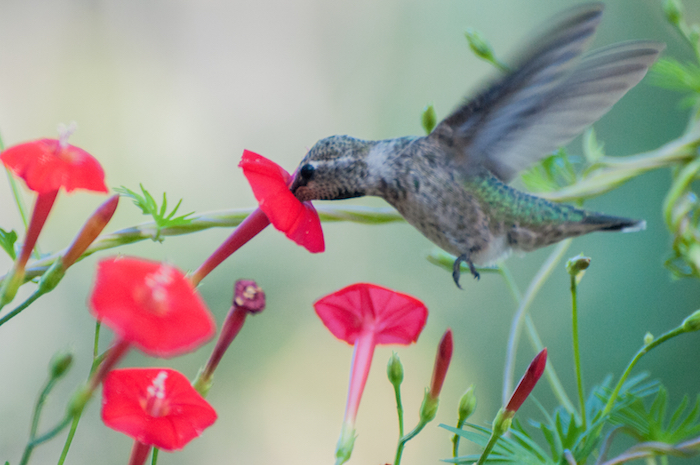
You don’t have to travel to exotic places or visit zoos to see these amazing beaks in action. Notice the different ways the house finches and the nuthatches that visit your feeders get into the seeds that they eat. Look at the bills of the birds in your yard – do they look like tweezers, probes or chisels? Then watch and see how the bird uses its beak. This makes another way to enjoy the birds around us.

